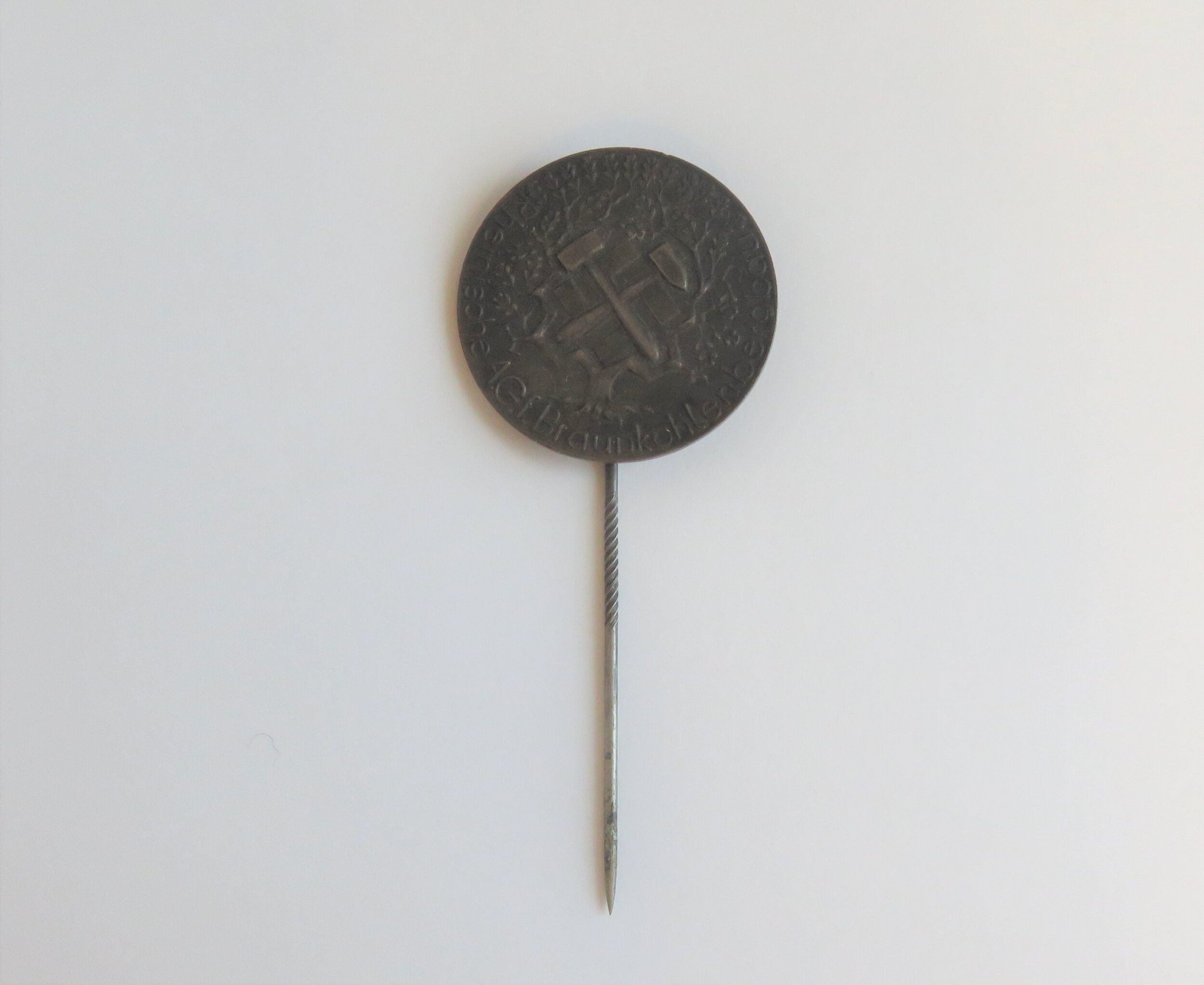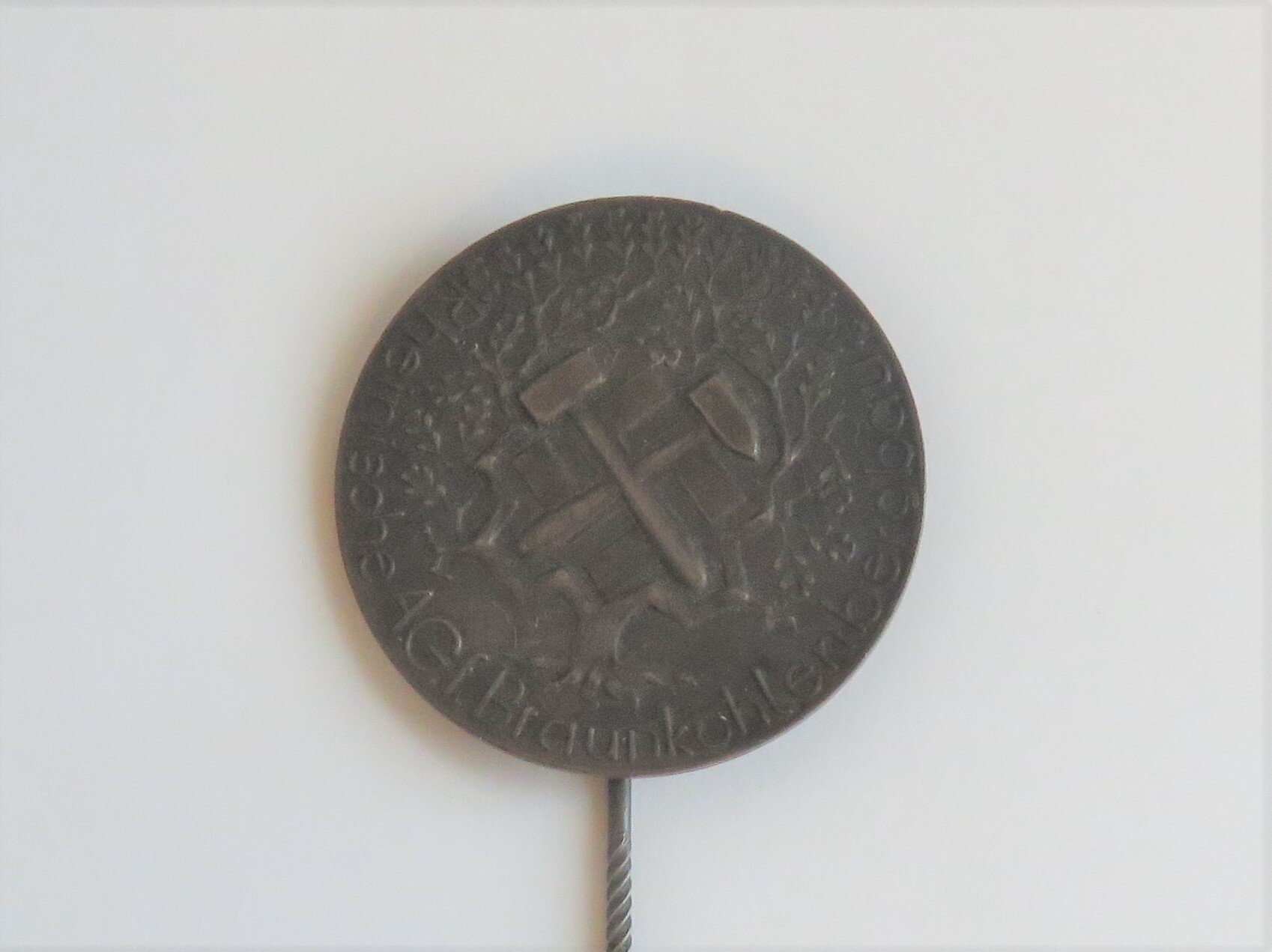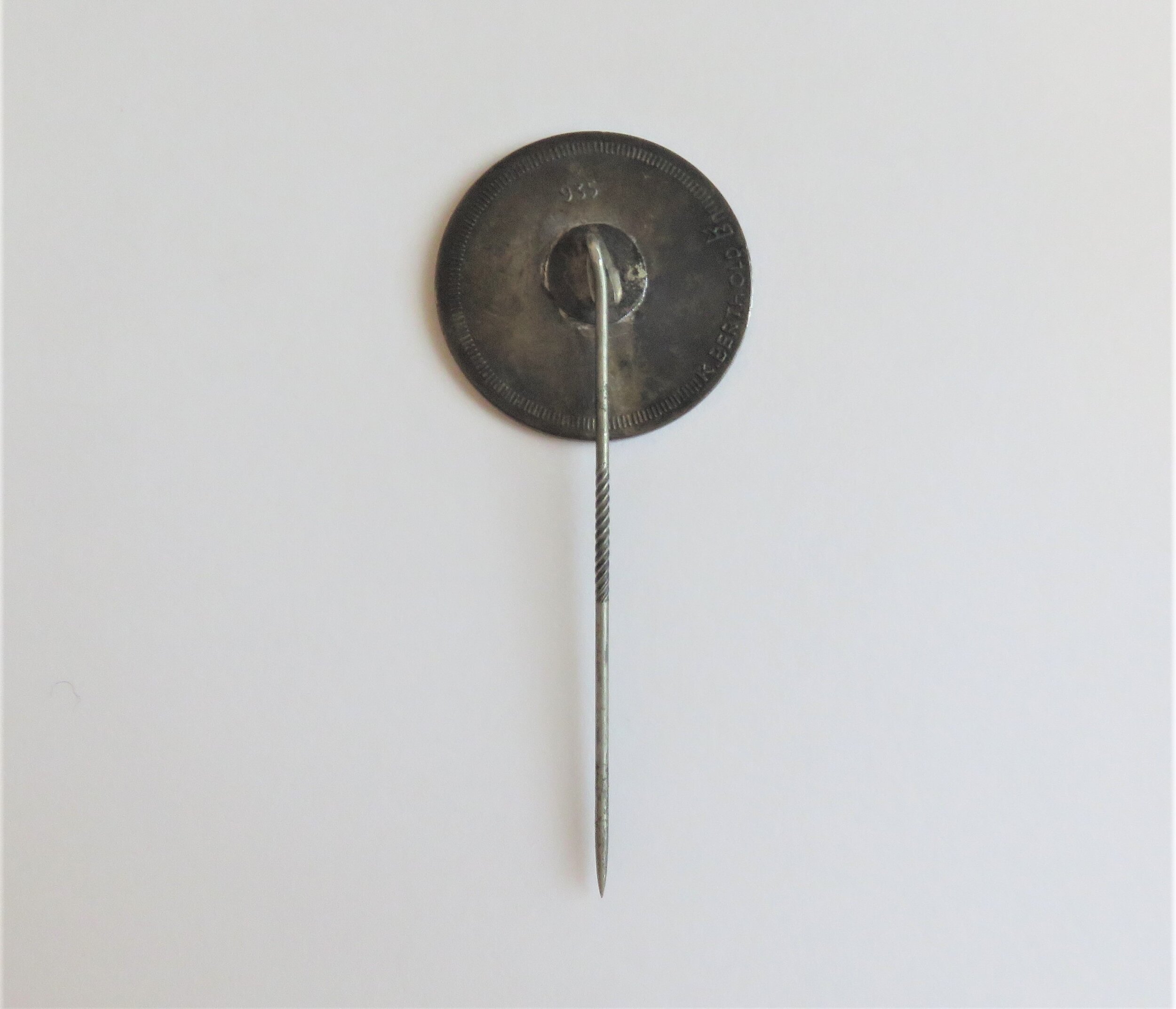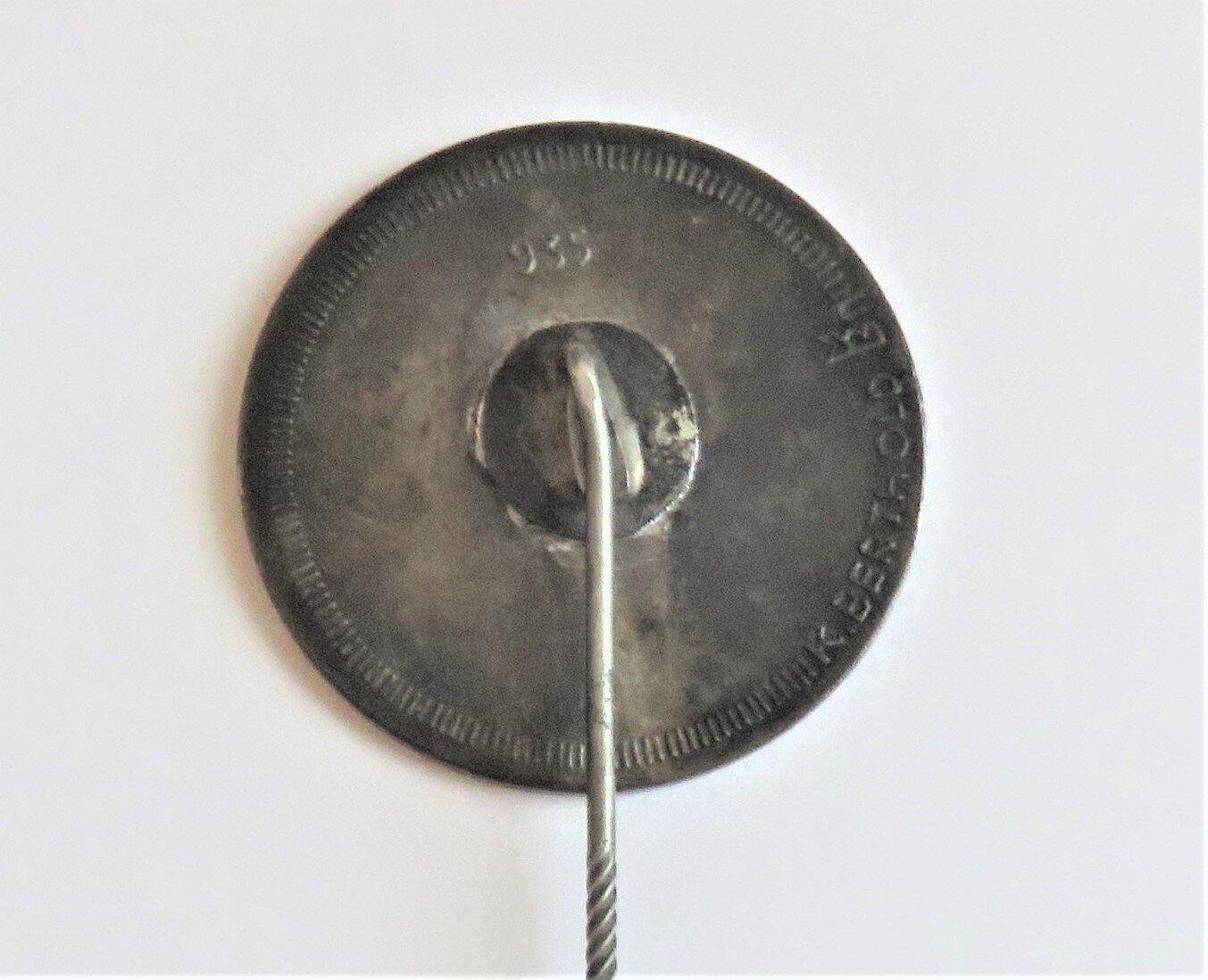Germany. Miners Stickpin by Berthold




Germany. Miners Stickpin by Berthold
One of the most unique stickpins within the Third Reich. The obverse has crossed miners tools superimposed over a swastika and inscribed with “Rheinische A. G. f. Braunkohlenbergbau”. Rheinische A. G. f. was a publicly trade company and it mined Braunkohlenbergbau (Lignite or low grade coal). The reverse is stamped 935, meaning it is made out 93.5% silver (VERY unusual for a stickpin) and maker marked “K. Berthold” who didn’t have a RZM authorization to make this type of item. Also, the size of the medallion made out of silver mean the cost per stickpin was 20x - 30x as expensive as normal stickpins. So how do we interpret all this information? I believe that Rheinische A. G. f. contract K. Berthold to make these privately for the company to hand out to VIPs when they visited, meaning they only had a very small number made. Try to find another one. MINT.
A16116